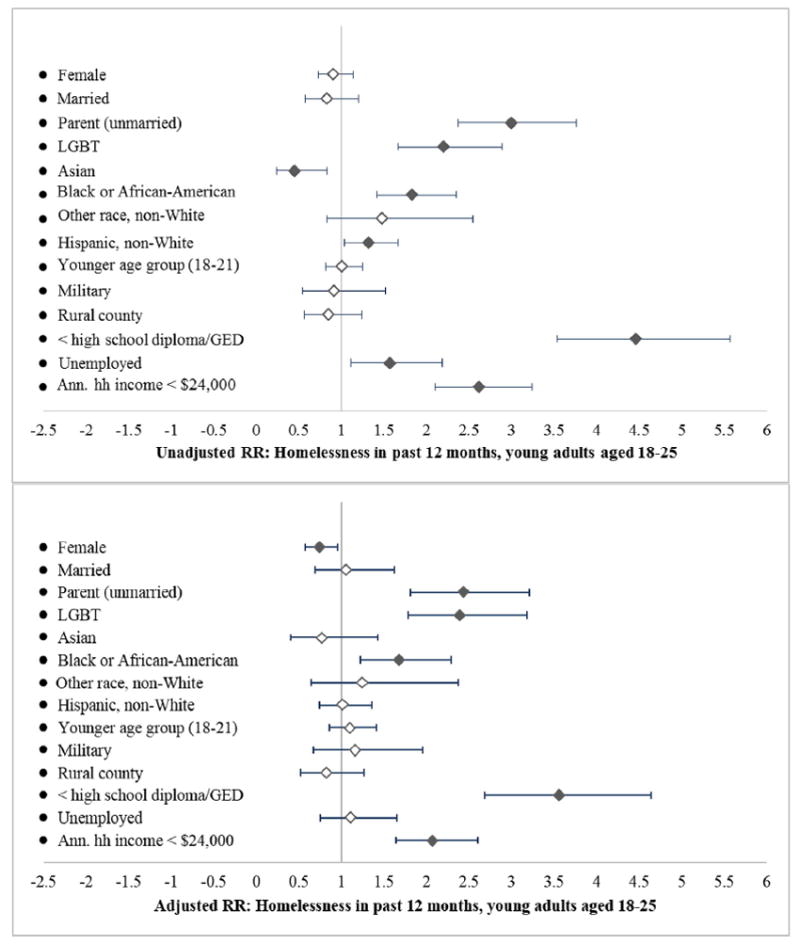Figure 2.

Logistic regressions for youth homelessness (aged 18–25, self-report). Note: The dependent variable is explicitly reported homelessness (excluding couch surfing only). Unadjusted relative risks (RRs) express associations between homelessness and one other variable only (e.g., female). Adjusted RRs present variable-wise RRs having controlled for all other variables in the model. Diamonds represent the RR while the extending lines on either side of the diamonds represent corresponding 95% CIs. A filled diamond indicates that the RR is statistically significant (p < .05). An RR of 1.0 means that risk is even between two groups. Each RR represents the difference in risk of having experienced homelessness between the group described by the variable (e.g., females) and its opposite reference group (e.g., males). The reference group for the “younger age group (18–21)” is respondents aged 22–25. Race variables compare to all others, of which the majority are White non-Hispanic (e.g., for Black or African-American, the reference group is all youth who were not Black or African-American). For the unemployed variable, the reference group is all youth who were not unemployed, including those who were employed or who were not in the labor force. Parent (unmarried) = the youth was an unmarried parent; Ann. hh income = annual household income.
